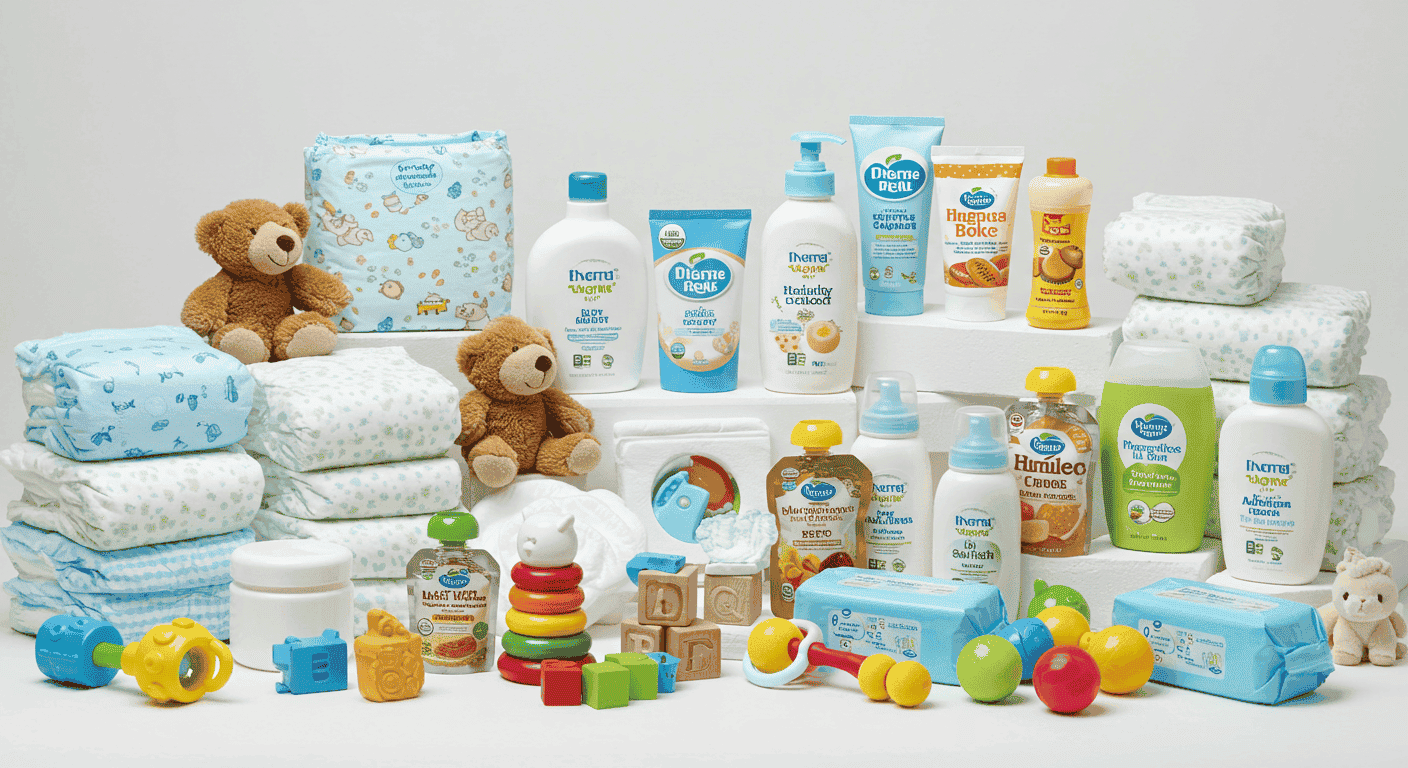Getting free books for kids is a valuable opportunity for families, educators, and caregivers to ensure children have access to reading materials. With the increasing costs of living, many families struggle to afford books for their children. However, there are numerous programs and resources available that offer free books for children in various formats.
Reading is essential for a child’s development. It plays a key role in enhancing language skills, cognitive abilities, and emotional growth. By introducing kids to books early on, parents can significantly boost their children’s literacy and instill a lifelong love for reading. In fact, research shows that children who are read to regularly perform better academically and socially.
The good news is that there are many ways to get free reading materials for kids without spending a fortune. Programs and initiatives like public library resources, book giveaways, and online platforms offer access to a wide range of free books. So, how can parents, teachers, and caregivers find these opportunities and provide free books for kids without breaking the bank? Let’s explore some of the best programs and resources available.
Why Free Books for Kids Matter
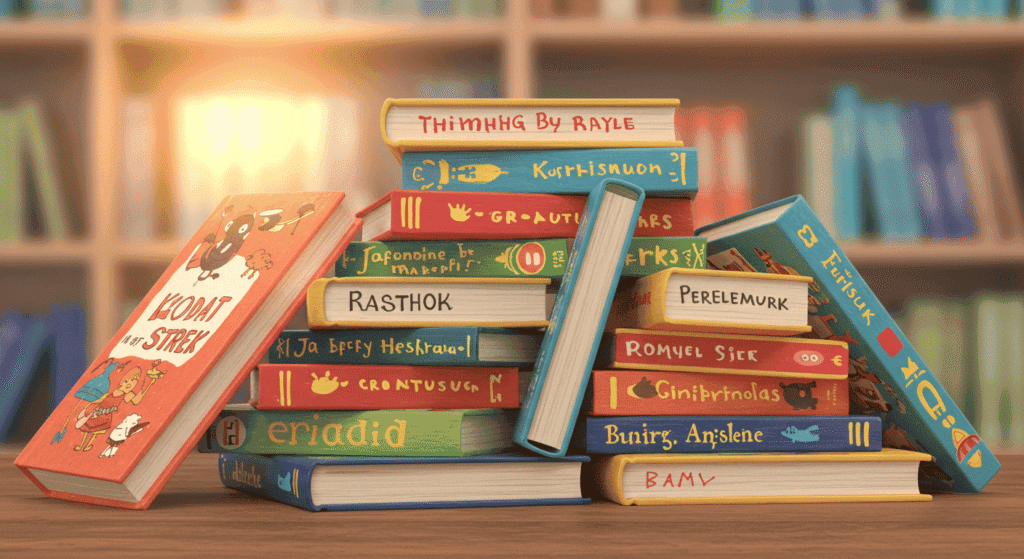
Encouraging Reading from an Early Age
Introducing children to reading at a young age has a profound impact on their literacy skills. Research shows that early exposure to books helps children develop essential reading skills, such as word recognition, phonemic awareness, and language comprehension. The more a child is exposed to books and reading activities, the stronger their reading foundation becomes. This early start helps them keep up with their peers academically and sets the stage for lifelong learning.
For families with limited financial resources, access to free books for kids can make all the difference. Many children in underserved communities may not have access to books at home, which can hinder their educational progress. By providing free books, we can bridge the gap and ensure that all children, regardless of their background, have the tools they need to succeed. Programs offering free kids books open the door to equal learning opportunities, fostering a love for reading and reducing educational inequality.
Benefits of Reading for Children’s Development
Reading offers numerous cognitive benefits for children. It enhances their vocabulary, comprehension, and critical thinking abilities. When children read regularly, they encounter new words and ideas, which helps them build a richer vocabulary. This improved language skills contribute to their academic success in subjects beyond reading, such as math and science. In addition, reading stimulates cognitive development by encouraging children to think critically, analyze information, and draw connections between concepts.
Beyond cognitive benefits, reading also has emotional and social advantages. Books help children develop empathy by allowing them to experience different perspectives and understand the emotions of others. Through characters and stories, children learn to recognize and manage their own emotions, which plays a vital role in their emotional intelligence. Furthermore, books spark creativity by immersing children in imaginative worlds and inspiring them to think outside the box. All of these factors contribute to well-rounded, emotionally intelligent individuals, ready to navigate the world with empathy and innovation.
Best Programs Offering Free Books for Kids
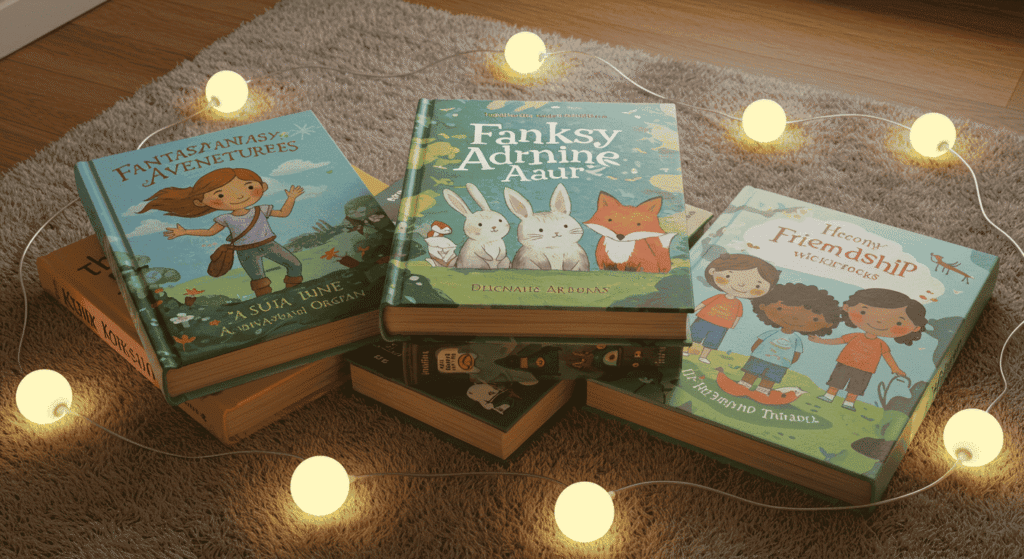
Imagination Library
The Imagination Library is a renowned program that provides free books to children, starting from birth through the age of five. Founded by country music legend Dolly Parton, this initiative aims to foster a love for reading in young children, regardless of their family’s income.
Parents can sign up their children online through the official Imagination Library website. Once registered, children will receive a free, high-quality book every month until they turn five. The books are age-appropriate and help promote early literacy. The program is available in multiple countries, with a focus on the United States, Canada, and the UK.
Notable partnerships include Dolly Parton’s Imagination Library and local communities, libraries, and literacy organizations that help expand the program’s reach.
First Book
First Book is a nonprofit organization dedicated to providing new books to children in need, especially those from low-income families. The program works by distributing books to schools, libraries, and community organizations serving children in underserved areas.
By offering a range of free books, First Book helps ensure that children have access to educational materials that promote reading and literacy development. They have a special focus on providing books to schools and organizations that work with children from low-income households.
Table: Popular Books Offered by First Book
| Age Group | Genre | Example Books |
|---|---|---|
| 0-5 | Picture Books | “The Very Hungry Caterpillar” |
| 5-8 | Early Readers | “Green Eggs and Ham” |
| 8-12 | Chapter Books | “Charlotte’s Web” |
| 12+ | Young Adult | “The Hunger Games” |
Little Free Library
Little Free Library is a community-driven initiative where individuals create small, free book exchanges in their neighborhoods. This program encourages sharing books freely without the need to buy or return them. It fosters a sense of community and promotes the joy of reading.
To find a Little Free Library near you, check their online map or simply look around local neighborhoods. If there isn’t one in your area, consider starting your own! Little Free Library provides resources to help people build and register their own little libraries. It’s a great way to bring more books to your community and encourage reading.
Bookstart
Bookstart is an early literacy program that provides free books for babies, toddlers, and preschoolers. The program is available in various countries, such as the UK, where Bookstart distributes free starter packs containing books for children, tailored to different age groups.
Parents can access these resources through healthcare providers, libraries, and local authorities based on their location. Depending on your country, registration can happen through medical visits, such as pediatric appointments or at local libraries. Bookstart ensures that every child has the opportunity to begin their reading journey, no matter their background.
Digital Free Book Resources for Kids
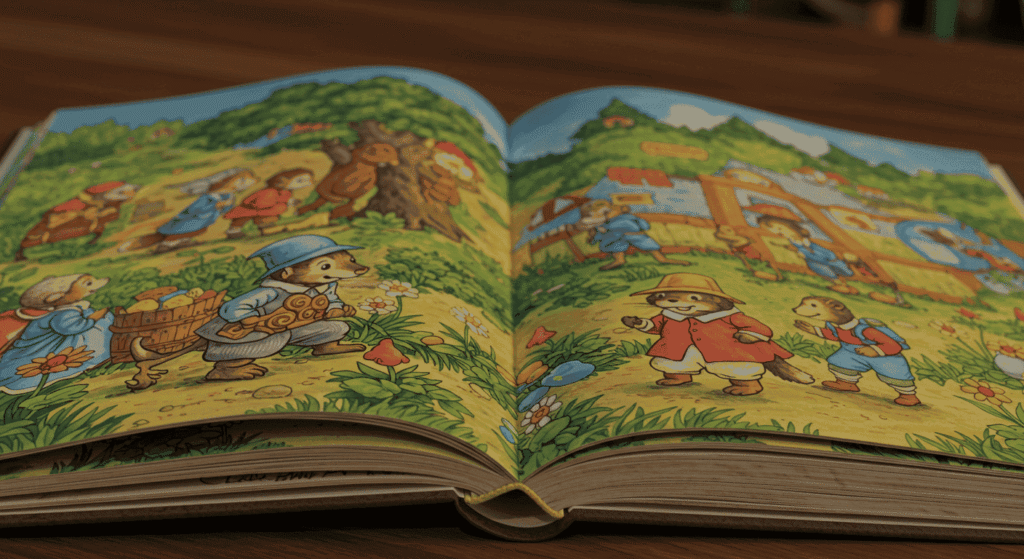
Project Gutenberg
Project Gutenberg offers a vast collection of free eBooks, including many classic children’s books. The platform focuses on providing books that are in the public domain, so you can download and read timeless stories for free.
For parents and educators, Project Gutenberg is a fantastic resource for introducing kids to literary classics. Some popular children’s books include works by authors like Lewis Carroll, L. Frank Baum, and Frances Hodgson Burnett.
Table: Free eBooks for Kids on Project Gutenberg
| Title | Age Range | Genre |
|---|---|---|
| “Alice’s Adventures in Wonderland” | 5-10 | Fantasy |
| “The Wonderful Wizard of Oz” | 5-10 | Fantasy |
| “The Secret Garden” | 8-12 | Fiction |
| “Treasure Island” | 10+ | Adventure |
Amazon Kindle Free Kids eBooks
Amazon Kindle offers a selection of free eBooks for kids, which can be accessed through the Kindle app on various devices such as smartphones, tablets, and computers. Kindle’s vast eBook library includes a dedicated section for children’s books, many of which are available for free.
To access these free books, simply download the Kindle app on your device, and navigate to the Kindle Free Book Store. You can filter by children’s books to find titles appropriate for different age groups. Make sure to check out promotions and limited-time offers for free books from well-known authors and publishers.
Open Library
Open Library provides a free eBook lending service, which includes a large collection of children’s books. With a simple registration, you can borrow digital books for free for a limited period, similar to how physical libraries work.
To borrow a book from Open Library, you’ll need to create an account. Once registered, you can search their catalog for children’s books, borrow them for a set period, and then return them to borrow others. It’s a great way to access free books for kids digitally and keep them engaged in reading.
Storynory
Storynory is an online platform offering free audio books and stories for kids. It specializes in delivering high-quality, engaging content that children can listen to, fostering both literacy and creativity. Storynory offers a wide variety of free audio stories, from fairy tales and fables to classic literature and original stories.
Many of the stories available on Storynory are downloadable, making it easy to listen on the go. Popular stories include “The Ugly Duckling,” “Cinderella,” and “The Selfish Giant,” all of which are perfect for young listeners. Storynory is an excellent resource for children to develop their listening skills while enjoying stories.
Free Book Giveaways and Book Clubs for Kids
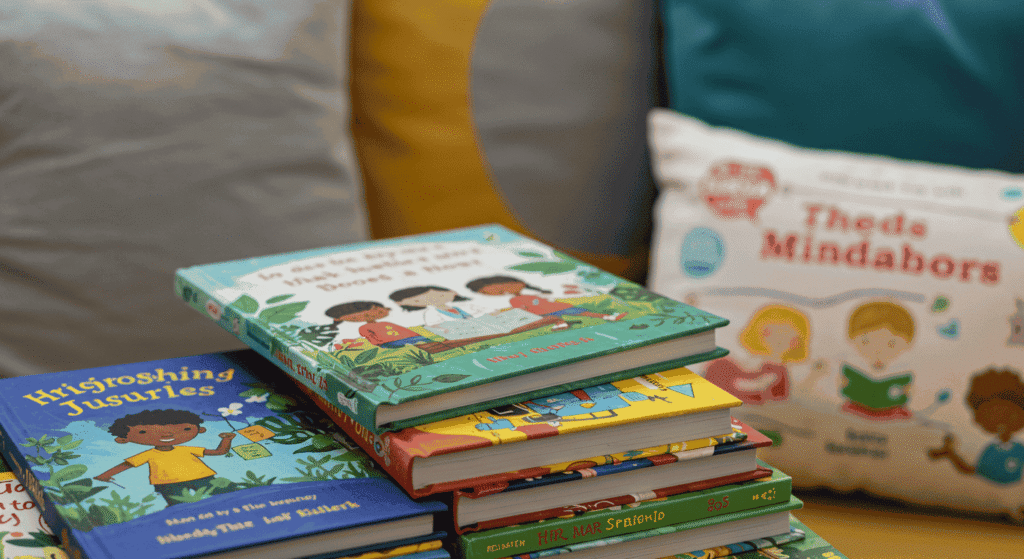
How to Score Free Books from Book Giveaways
One of the easiest and most exciting ways to get free books for kids is by entering book giveaways. Many publishers, authors, and reading platforms host regular promotions where winners receive new or popular children’s books at no cost.
A few key places to look:
- Goodreads Giveaways: Many authors and publishers list free children’s books as part of their promotional campaigns.
- Social Media Promotions: Follow publishers and kid-friendly book bloggers on platforms like Instagram or Facebook. They often host giveaways for followers.
- BookBub: Sign up for BookBub’s daily emails, where you can select children’s books as a category. BookBub not only highlights deals but also shares links to limited-time free books.
These giveaways are usually easy to enter and often only require an email or social media interaction. With a bit of luck and consistency, parents and educators can build a solid home library without spending a dime.
Joining Free Book Clubs for Kids
Free kids’ book clubs are another fantastic way to get regular reading material. Many of these clubs provide free books by mail or offer downloadable titles through their websites or apps. They’re often sponsored by educational organizations, libraries, or even major publishers.
Table: Free Book Clubs for Kids
| Book Club Name | Age Range | Genre Focus | How to Join |
|---|---|---|---|
| Dolly Parton’s Imagination Library | 0–5 yrs | Variety (picture books) | Sign up via local partner organization |
| PJ Library | 0–12 yrs | Jewish-themed stories | Enroll online by zip code |
| Read Conmigo | PreK–5 | Bilingual (English/Spanish) | Register on their website (limited regions) |
| Pizza Hut Book It! Club | K–6th | General (rewards-based) | Schools enroll students; parents log reading |
Joining a book club not only encourages regular reading but also gives kids a fun sense of community and reward around books.
Scholastic Book Clubs’ Free Book Offers
Scholastic Book Clubs are well-known for their affordable children’s books and classroom deals. But they also provide opportunities for parents and teachers to earn free books for their kids.
Here’s how to get started:
- Teachers can sign up for a classroom account and encourage parents to place book orders. Every purchase earns points that can be redeemed for free books.
- During promotional periods, Scholastic often gives bonus books with certain order thresholds.
- Parents can look for flyers sent home from school or browse the online Scholastic store to find buy-one-get-one offers and limited-time freebies.
Pro tip: Coordinate with your child’s teacher to maximize rewards and boost the classroom or home library for free.
Local Library Programs That Offer Free Books for Kids
How Local Libraries Are Your Best Resource for Free Kids’ Books
Your local library is often the most accessible and reliable place to get free books for kids. Most libraries allow children to check out a wide range of books at no cost, helping build literacy and a love for reading without requiring any purchases.
To get started:
- Register for a library card: Parents or guardians usually need to bring an ID and proof of address. In many cases, kids can get their own cards too.
- Explore the children’s section: Libraries often organize their collections by age group, reading level, and interest.
- Ask about reading kits or curated book bundles tailored to your child’s age or reading goals.
Libraries also offer seasonal and ongoing reading incentive programs. For example, Summer Reading Programs reward children for reading a certain number of books or hours. These programs may offer free books, bookmarks, or small prizes as incentives, which help keep kids engaged throughout the year.
Library Book Giveaway Events
Beyond lending books, many libraries hold book giveaway events where children can keep the books they choose. These may include:
- Annual literacy events or community book fairs.
- Book swaps where kids bring books they’ve outgrown and trade them for new ones.
- Back-to-school giveaways that include both supplies and books.
How to get involved:
- Visit your library’s website or follow their social media pages.
- Check bulletin boards during visits for event flyers.
- Sign up for email newsletters to receive alerts about upcoming free book events.
These events are usually open to everyone in the community, making them a great opportunity for families of all income levels to expand their home libraries.
Digital Library Programs for Kids
Many libraries now offer robust digital collections, which include thousands of eBooks and audiobooks for children. All you need is a valid library card and a compatible device.
Popular digital platforms include:
- Libby (by OverDrive): Offers a huge catalog of children’s books in digital and audiobook formats.
- Hoopla: Includes not only books, but also children’s movies, music, and educational videos.
- TumbleBookLibrary: Features animated talking picture books, read-alongs, and chapter books for kids.
With these apps, children can access books anytime, anywhere—perfect for families on the go or those with limited access to transportation.
Whether through in-person visits or digital access, local libraries remain one of the most valuable free resources for promoting children’s literacy.
How to Create Your Own Home Library of Free Books for Kids
Collecting Free Books from Different Sources
Building a home library doesn’t have to be expensive—free books for kids are more accessible than ever. With a little effort and creativity, families can collect an impressive collection of titles from:
- Nonprofit programs like Imagination Library and First Book
- Digital resources such as Project Gutenberg and Open Library
- Local giveaways and community book swaps hosted by libraries or schools
- Book fairs and online contests on platforms like Goodreads and Instagram
- Book exchanges: Organize a DIY swap with neighbors, friends, or parent groups—everyone brings gently used books to trade
These methods not only expand your book collection but also introduce children to a variety of genres and voices without straining your budget.
Organizing a Home Library for Kids
Once you’ve gathered a solid selection of books, organizing your home library can make reading more engaging and manageable for kids. Here’s how:
- Sort by age group or reading level: Use labels or colored bins to help children find age-appropriate material.
- Organize by genre or theme: Group together adventure stories, science books, fairy tales, or picture books to cater to kids’ interests.
- Use low, open shelves: Make books easily reachable so kids can browse on their own.
- Add a cozy reading nook: Include soft pillows, a bean bag, or a child-sized chair in a quiet corner to create an inviting reading space.
This setup not only encourages reading but also fosters a sense of ownership and curiosity in children.
How to Encourage Kids to Read at Home
Creating a home library is just the first step. Keeping kids excited about reading takes a little creativity and consistency. Here are some ways to motivate young readers:
- Reading incentives: Offer small rewards (stickers, bookmarks, extra playtime) for completing a certain number of books or pages.
- Make it a family activity: Schedule daily reading time where everyone in the house reads together.
- Create fun challenges: A reading bingo board or a monthly “book quest” can make reading feel like an adventure.
- Use interactive methods: Act out stories, use voices for characters, or try themed crafts based on the books read.
When children see reading as fun rather than a chore, they’re more likely to stick with it—building a lifelong love of books one page at a time.
Extra Tips for Finding Free Books for Kids
Keep an Eye Out for Local Book Fairs and Charity Events
Local book fairs, community events, and charity drives are goldmines for free children’s books. Many libraries, schools, and nonprofits host these events to promote literacy and give families access to free resources. Here’s how to make the most of them:
- Check community bulletin boards or local Facebook pages for announcements.
- Visit school-hosted book fairs, especially those that partner with literacy organizations.
- Look for donation-based charities, such as those distributing books in underserved areas—families are often welcome to take a few titles home.
These events often offer a mix of brand-new and gently used books suitable for various age groups.
Participate in Online Swap Groups for Free Kids’ Books
Online communities are an underrated but powerful way to score free books for kids. Swapping books not only saves money but also builds connections with other families.
- Facebook Groups: Search for “free book swap,” “mom groups,” or “community book exchange” in your area.
- Nextdoor App: Neighbors often post about books they’re giving away.
- Reddit threads: Subreddits like r/Parenting or r/Freebies sometimes share swap opportunities.
When joining, be sure to check group rules and safety practices, especially for in-person pickups or drops.
Follow Your Favorite Authors and Publishers
Many children’s book authors and publishers offer free books, chapters, or story downloads through:
- Email newsletters: Sign up for early access to releases or promotional giveaways.
- Social media contests: Instagram and Twitter are popular platforms for giveaways.
- Publisher websites: Look for “educator resources,” “free PDFs,” or “printables” in the kids’ book section.
Not only do these freebies help expand your home library, but they also introduce your child to new authors and stories before they become widely known.
Conclusion
In this guide, we’ve explored the best resources for getting free books for kids in the USA, from national programs like Imagination Library and First Book, to digital libraries such as Project Gutenberg and Open Library. We’ve also highlighted the benefits of participating in local library events, book giveaways, and community swap groups, as well as tips for creating your own home library filled with free books.
It’s clear that fostering a love for reading in children is not only essential for their literacy and cognitive development but also for their emotional and social growth. By ensuring every child has access to books, we’re helping to unlock their potential and broaden their imaginations.
Now it’s time for you to take action! Explore these free book resources and start building your child’s very own book collection today. Whether you’re a parent, teacher, or caregiver, there’s an abundance of free resources just waiting to be discovered. Let’s make reading fun, accessible, and free for all kids!





